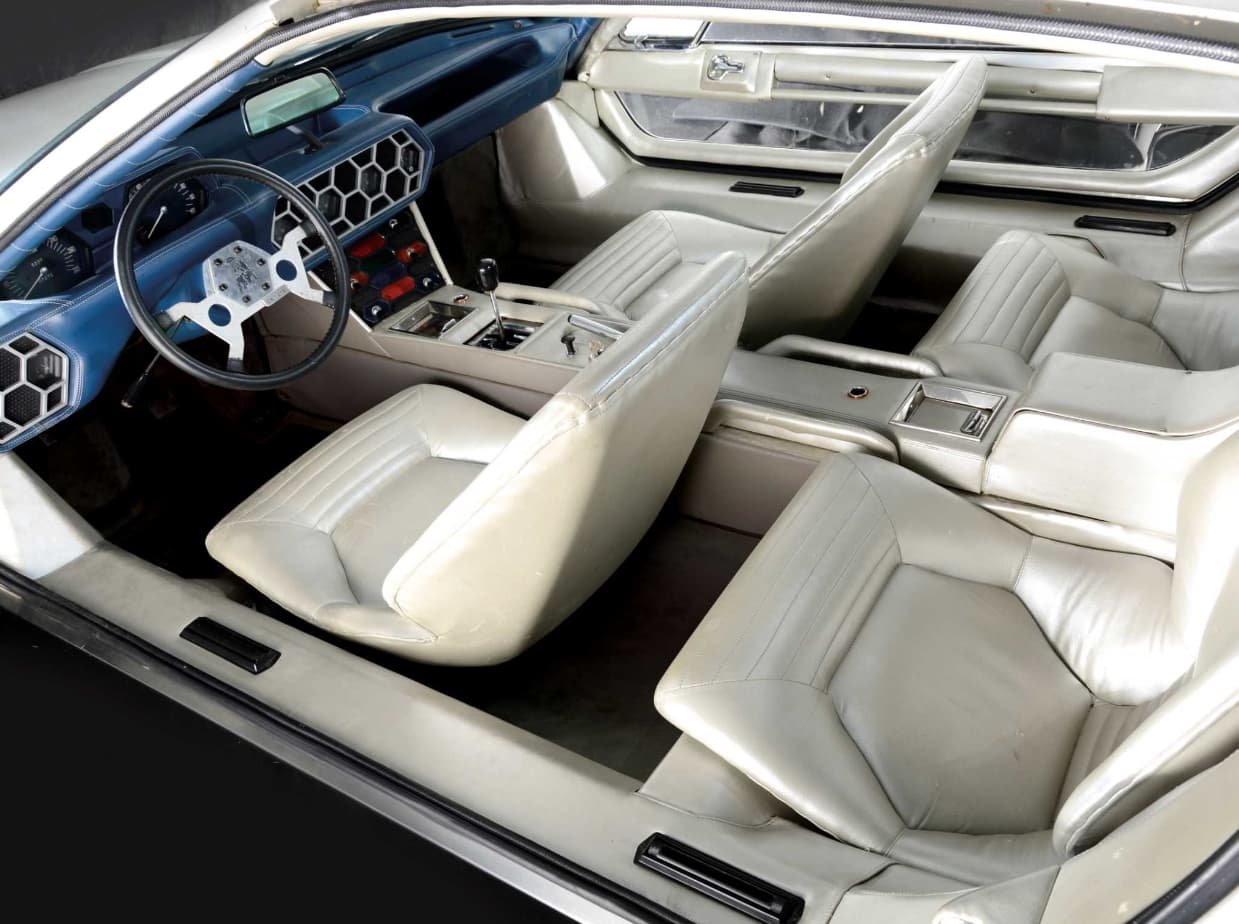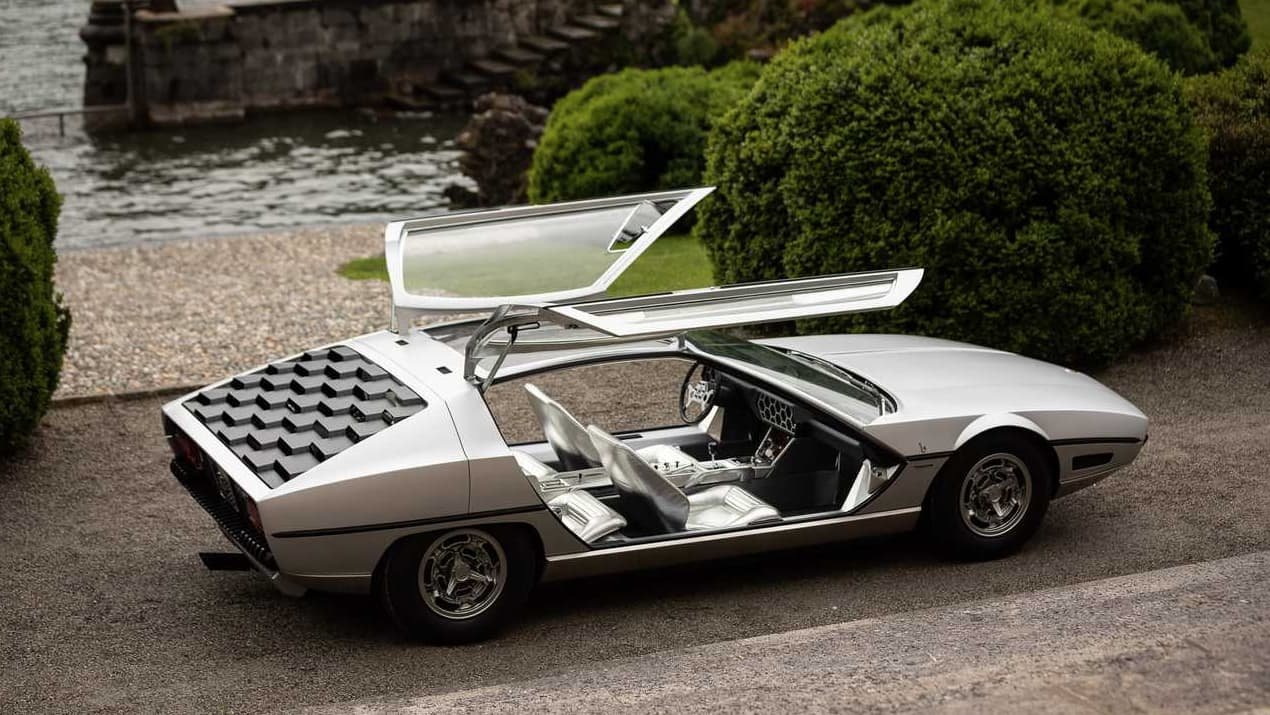In 1967, Lamborghini already enjoyed a high reputation, after the presentation a year before of the Lamborghini Miura. The 400GT was also included in its range. One was a supercar and the other a grand tourer. But Ferruccio wanted to offer a more practical model. For this reason, he devised this Lamborghini Marzal, a prototype that would never reach production.
In fact, it was conceived with that intention, that it never reach the assembly line, but rather that it serve as inspiration for future practical models of the Italian brand. Ferruccio Lamborghini aspired to build a more comfortable and spacious vehicle for his customers, with four real seats, and the result was the Lamborghini Marzal.
Lamborghini Marzal (1967): the “glass” prototype that inspired the Espada
The design of the Marzal was left in the hands of Marcello Gandini (who worked at Bertone), who drew a wedge-shaped coupé, with a long and flat hood, a narrow front end characterized by triple optical groups, a huge glass area and doors with opening in the shape of gull wings.
The Marzal remained faithful to the sporting philosophy and the performance that is always expected in a Lamborghini, while being comfortable and spacious. It was also the culmination of one of Bertone and Ferruccio’s projects.
The name of the prototype, as in all the brand’s models, was related to the world of bullfighting: Marzal was a bullfighter who lost the battle against the bull in a bullring in the 40s.

On the platform of the Miura
The Lamborghini Marzal was built on the Miura platform, but extended to accommodate the extra 12 centimeters of wheelbase, compared to the supercar. This increase in size allowed it to accommodate a second row of seats for two additional passengers. In total, it was 4.45 meters long, 1.7 meters wide and 1.1 meters high. The battle was 2.6 meters.
But, without a doubt, one of the most striking (and controversial) aspects were its gull-wing doors to facilitate access to the interior, with a glass surface that covered almost the entire door. Something that Ferruccio did not like, since he understood that it reduced the privacy of the passengers and openly showed the legs of the women on board.
But it was only a prototype that, as we have said, was never developed with the intention of taking it to production. perhaps, for this reason the doors presented such a striking design. The same was the case with the interior, very futuristic.
An inline six-cylinder engine
Mechanically, the Lamborghini Marzal was powered by a 2.0-liter inline six-cylinder engine with twin Weber carburettors, which developed 170 hp and was linked to a five-speed manual gearbox. In essence, it was half the V12 block of the Miura.
With its 1,220 kg of weight, the Marzal accelerated from 0 to 100 km/h in 9.2 seconds and reached 225 km/h. They are not spectacular records, far from it, to be a Lamborghini, but it managed to circulate at high speeds with total comfort.
A project for future models
This prototype was never manufactured, but it had a decisive influence on the future of the brand. The same year of his introduction, he made a prominent appearance at the Monaco Grand Prix, along with Prince Rainier III and Princess Grace Kelly. A year later, in 1968, came the Lamborghini Espada, a grand tourer derived from the Marzal.

The Espada was also conceived by Gandini and, in its design, traits inherited from the Marzal can be appreciated. A total of 1,217 units were built, making it the first model of the Italian firm with a considerable production volume and the first to exceed 1,000 units. Later, it would be surpassed by the Lamborghini Countach.
Berone kept the only unit built of the Lamborghini Marzal, until it was auctioned in 2011, along with other models from the Italian bodybuilder, for a price of 1.51 million euros.




